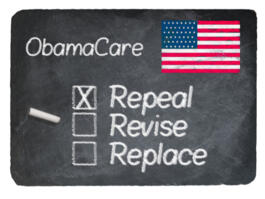Getting More for Less in Health Care
A Commentary By Froma Harrop
Sad, sad, sad that in talking about budget cuts, we use painful words like "extracting billions from Medicare" or "slashing the Medicare entitlement." Has it ever occurred to the gladiators that improving the quality of health care can also save money? If Medicare spends less on a patient because the hospital does a good job the first time, that's what we call a win-win situation. The patient gets better care. The taxpayers get billed only once. Yay.
Many ObamaCare critics simply can't say yes to the good news that the Affordable Care Act will actually reduce deficits -- despite positive projections by the Congressional Budget Office. They won't concede that in a tremendously wasteful health care system such as ours, cuts in spending can be made without inconveniencing patients in the slightest.
As part of the reforms, Medicare last week announced bonus and penalty payments to hospitals based on the quality of care. The Hospital Value-Based Purchasing Program is starting to change Medicare's role as a dumb check-writing machine. What crazy incentives does it seek to end?
Example: An elderly woman goes to the emergency room with pneumonia but receives the wrong antibiotic. The hospital gets paid anyway. When she has to be readmitted, the hospital gets paid again.
Example: A heart attack patient isn't given medication to avert blood clots within 30 minutes of arriving at the hospital, as required by guidelines. If expensive complications develop as a result, the hospital and doctors get paid extra to address the added problems.
It's like you paid for a new tire, learned that the tire was defective and is then asked to pay again for the replacement. That's the sort of double-billing Medicare has shrugged at. (And never mind the toll that useless or harmful treatments have on the patients.)
The new hospital quality program bases its score on patients' experience, in addition to how well hospitals follow clinical guidelines. Is the hospital clean and quiet? Do the caregivers manage pain? How well do doctors and nurses communicate?
Medicare compared 3,000 hospitals and rewarded 1,557 of them with bonuses and reduced payments to 1,427 others. The national winner was Treasure Valley Hospital, a 10-bed, physician-owned facility in Boise, Idaho. The biggest loser was Auburn Community Hospital, near Syracuse, N.Y.
This is but one way the health care reforms can push hospitals to spend the taxpayers' money more carefully -- while improving the patient experience. This fall, Medicare started cutting payments to hospitals whose patients are readmitted too often.
Of course, one must ask to what extent the problems reflect the hospital and to what extent a tough patient population. Poor people, for example, often lack resources and strong social support networks.
"It depends on which quality measure we're looking at," Dr. Ashish Jha, a researcher at the Harvard School of Public Health, told me. "In the readmissions penalty program, it's clear that it's about the patient population." His group found that the poor were more likely to be readmitted regardless of hospital.
Jha said he can't answer similar questions yet about the Hospital Value-Based Purchasing Program. His group is studying it, and results will be forthcoming in a few months.
But here is the important takeaway from this part of ObamaCare: The federal government is now addressing not only how much it spends on health care but what it is getting for the money. The stat that keeps jumping up is that the United States spends twice the rich-country average per person on health care while achieving no better (or worse) outcomes. When it comes to health care, yes, we can do better with less.
COPYRIGHT 2012 THE PROVIDENCE JOURNAL CO.
DISTRIBUTED BY CREATORS.COM
See Other Political Commentary.
See Other Commentaries by Froma Harrop.
Views expressed in this column are those of the author, not those of Rasmussen Reports. Comments about this content should be directed to the author or syndicate.
Rasmussen Reports is a media company specializing in the collection, publication and distribution of public opinion information.
We conduct public opinion polls on a variety of topics to inform our audience on events in the news and other topics of interest. To ensure editorial control and independence, we pay for the polls ourselves and generate revenue through the sale of subscriptions, sponsorships, and advertising. Nightly polling on politics, business and lifestyle topics provides the content to update the Rasmussen Reports web site many times each day. If it's in the news, it's in our polls. Additionally, the data drives a daily update newsletter and various media outlets across the country.
Some information, including the Rasmussen Reports daily Presidential Tracking Poll and commentaries are available for free to the general public. Subscriptions are available for $4.95 a month or 34.95 a year that provide subscribers with exclusive access to more than 20 stories per week on upcoming elections, consumer confidence, and issues that affect us all. For those who are really into the numbers, Platinum Members can review demographic crosstabs and a full history of our data.
To learn more about our methodology, click here.



